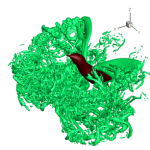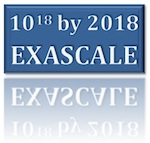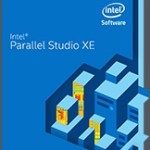This week Seagate announced that the company is shipping the world’s first 8TB hard disk drives. As a bulk storage drive for the Cloud market, the new device is optimized for cost per gigabyte vs. performance.
Archives for August 2014
ISC Big Data Conference Offers Early Bird Discount
ISC has announced an Early Bird discount for its second annual Big Data conference. The event will offer attendees insights into the latest developments in data-intensive computing from both industry players and researchers.
Supercomputing Hummingbirds and How they Hover
“For a hummingbird with only a 10 centimeter wingspan, the unsteady aerodynamics is complex enough to require millions of mesh points to resolve the many, many small vortices stirred up by the wings — the bird essentially is flying in an ‘ocean of vortices.’ Therefore, efficient algorithms and high-performance computing are necessary for this work.”
Understanding I/O Patterns at the Block Level with ioprof
Over at Admin HPC, Intel’s Jeff Layton writes that understanding how data makes its way from the application to storage devices is key to understanding how I/O works and that monitoring the lowest level of the I/O stack, the block driver, is a crucial part of this overall understanding of I/O patterns.
DOE Task Force Releases Recommendations for Exascale Investment
A new report on the problems and opportunities that will drive the need for next generation HPC has been released by the Task Force on High Performance Computing of Secretary of Energy Advisory Board. Commissioned by Secretary of Energy, Dr. Ernest J. Moniz, the report includes recommendations as to where the DOE and the NNSA should invest to deliver the next class of leading edge machines by the middle of the next decade.
Bill Gropp on Engineering for Performance in HPC
Achieving good performance on any system requires balancing many competing factors. More than just minimizing communication (or floating point or memory motion), for high end systems the goal is to achieve the lowest cost solution. And while cost is typically considered in terms of time to solution, other metrics, including total energy consumed, are likely to be important in the future. Making effective use of the next generations of extreme scale systems requires rethinking the algorithms, the programming models, and the development process. This talk will discuss these challenges and argue that performance modeling, combined with a more dynamic and adaptive style of programming, will be necessary for extreme scale systems.
Supercomputing Wind Farms at RES
OCF reports that Renewable Energy Systems Group [RES] is using a new high performance cluster and big data storage system to support the design, build, and operation of wind farms globally.
Video: Introduction to Node Level Performance Engineering
In this video, CSCS in Switzerland begins a two-day training course aimed to teach performance engineering approaches on the compute node level.
New Intel Parallel Studio XE 2015 Includes Support for OpenMP 4.0
Today Intel launched Intel Parallel Studio XE 2015, the latest release of its developer toolkit for HPC and technical computing applications.
PRACE SHAPE Pilot Releases Seven Whitepapers on Digital Manufacturing
PRACE has released a set of seven whitepapers from their SHAPE pilot program. Designed to bolster use of HPC by small and medium-sized enterprises in Europe, the SHAPE pilot worked with a few selected SMEs and introduced HPC-based tools and techniques into their business.













